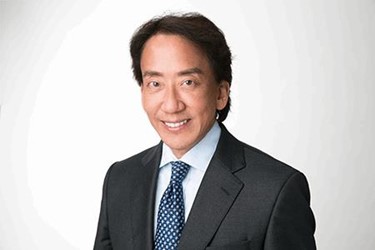What Might Be The Best Predictor Of Future Performance At Axovant Sciences?

By Rob Wright, Chief Editor, Life Science Leader
Follow Me On Twitter @RfwrightLSL

While attending BIO’s 2017 annual meeting in San Diego this past June, I had the opportunity to conduct an in-person interview with David Hung (to be featured in Life Science Leader’s October 2017 issue), the CEO of Axovant Sciences. In 2016, the former founder of Medivation navigated the successful acquisition of his company by Pfizer for $14.3 billion. During the interview, Hung exhibited an infectious smile and frequently referenced some of his past mentors (e.g., Bill Rutter and Rusty Williams) as well as many others he credits for his past success. And while Hung founded Medivation with the goal of developing a treatment for Alzheimer’s disease, which ended up with the colossal Phase 3 clinical trial failure of its lead product Dimebon, Medivation still ended up being a smashing success. Though many might credit the FDA’s approval of Medivation’s other compound, Xtandi (enzalutamide), a drug for late-stage castration-resistant prostate cancer, as being the primary driver behind Hung’s rise, I would argue that there are a number of other predictors that should be evaluated when anticipating future success.
Ever Heard Of The Stanford Marshmallow Experiment?
In the late 1960s and early 1970s, Stanford University psychologist Walter Mischel conducted the “Stanford marshmallow experiment.” The purpose of the experiment was to identify whether there was any connection between children who could delay gratification and their future prospects in life. During the experiment the child was presented a choice:
- have one marshmallow now, or
- have two marshmallows in 15 minutes time.
The experimenter left the room, leaving the child by themselves with the marshmallow, and would come back 15 minutes later to see the choice the child had made.
But unlike many studies which draw their conclusion and are rarely revisited, Mischel followed the children in the original sample for five decades, tracking how their ability to exercise self-control at an early age was correlated with various life outcomes as they grew into adolescents and adults. “Kids who were able to self-regulate, to delay self-gratification by the time they are four, five, or six years old, have a much better chance of doing well at school, have a much better chance of thriving as adolescents, and moving on in life,” Mischel stated in a May 11, 2015 video. So why is this relevant to David Hung?
Dr. Hung ran Medivation as CEO for 13 years. Interestingly enough, when the company was acquired, Hung still owned more than 90 percent of the stock options he had ever been granted. During our interview he commented that he always believed in putting his investors first, so they benefitted before he. Perhaps this approach of delayed gratification is one of the reasons behind why he was able to obtain a 21,000 percent ROI for Medivation investors, and handsomely (eventually) reward himself as well.
What Is The Best Predictor of Future Performance
There is a saying; “A tiger cannot change his stripes,” which basically means one cannot change their essential nature. While there are some who believe this doesn’t necessarily hold true (i.e., a person impacted by an extremely traumatic event can change who they are), my experience as a hiring manager has been that one of the best predictors of a person’s future performance was their past performance. People who were successful at a previous job tended to be successful in their new job. And while I didn’t set out to hire any bad apples, I did have the occasion to inherit a few, and perhaps why I subscribe to the notion a tiger can’t change its stripes.
During my interview with David Hung, I asked him about some of the people he brought with him from Medivation to Axovant. “Marion McCourt was my chief operating officer at Medivation and someone I consider to be my soulmate in business,” he explains. “After that success, we were convinced we wanted to work together again. So when I joined Axovant, I brought her with me.” But McCourt isn’t the only former Medivation person Hung convinced to join him at Axovant. Others included Thomas Templeman, Ph.D., SVP of pharmaceutical operation and quality assurance; Mark Wadley, SVP, U.S. business; and Samina Bari, VP, corporate communications. In addition, Hung also brought along two former Medivation board of director members (i.e., former Kraft Foods CEO Anthony Vernon and former Amgen CFO Kathryn Falberg), and his Medivation cofounder, Patrick Machado, to serve on Axovant’s eight-member board of directors.
To be sure, there are no guarantees that Axovant Sciences will be any more successful than the previous 99.6 percent of companies that have failed to bring an Alzheimer’s product to market. But Hung has a past history of success (and failure), which we will explore in Life Science Leader magazine’s October 2017 feature. Don’t miss out on learning what makes Dr. David Hung tick by becoming a Life Science Leader subscriber today with our special Fall Into Savings Offer — a $246 savings! We hope you enjoyed this free bonus content brought to you by Life Science Leader’s exclusive — Beyond The Printed Page online section of the magazine.
